Ted Nicolaou was an essential contributor to Charles Band’s Empire Pictures and Full Moon Entertainment studios, editing and directing many of their most iconic and popular films throughout the 1980s and 90s. His film TERRORVISION (which he can be seen directing in the above photo) is a personal favorite. I was honored to chat with him recently about his prolific career.
Where did you grow up, and how did you become interested in filmmaking?
I was born in Poughkeepsie, New York and I grew up in Dallas, Texas. My dad used to take me to see science-fiction monster movies and stuff every Saturday afternoon. And I gained a real love of movies, especially fantasy films from that. Then I went to University of Texas, thinking I was going to be a doctor, and saw a couple of films that kind of changed my whole direction in life. A friend took me to see Fellini’s film, Juliet of the Spirits, and another film that I saw was Bergman’s Seventh Seal. Those two movies just kind of showed me what artistry could be in film. Because before that I had been kind of a writer and rock-and-roller. I loved writing music and writing stories, and from those two movies I saw that you could kind of combine all of those arts into one incredible storytelling medium.
Is it true your first job on a feature film was on the crew of the original “Texas Chainsaw Massacre”?
Yeah, I was living in Austin, we were film students, and basically a friend of mine – I had been a boom operator for a friend of mine named Courtney Goodin, who was kind of the technical genius of Austin. When Chainsaw Massacre came around, Courtney was working on another film and so, I was recommended to be the sound man on it. Daniel Pearl, the DP was also a friend of mine from film school. So that’s how I came to be on the film.
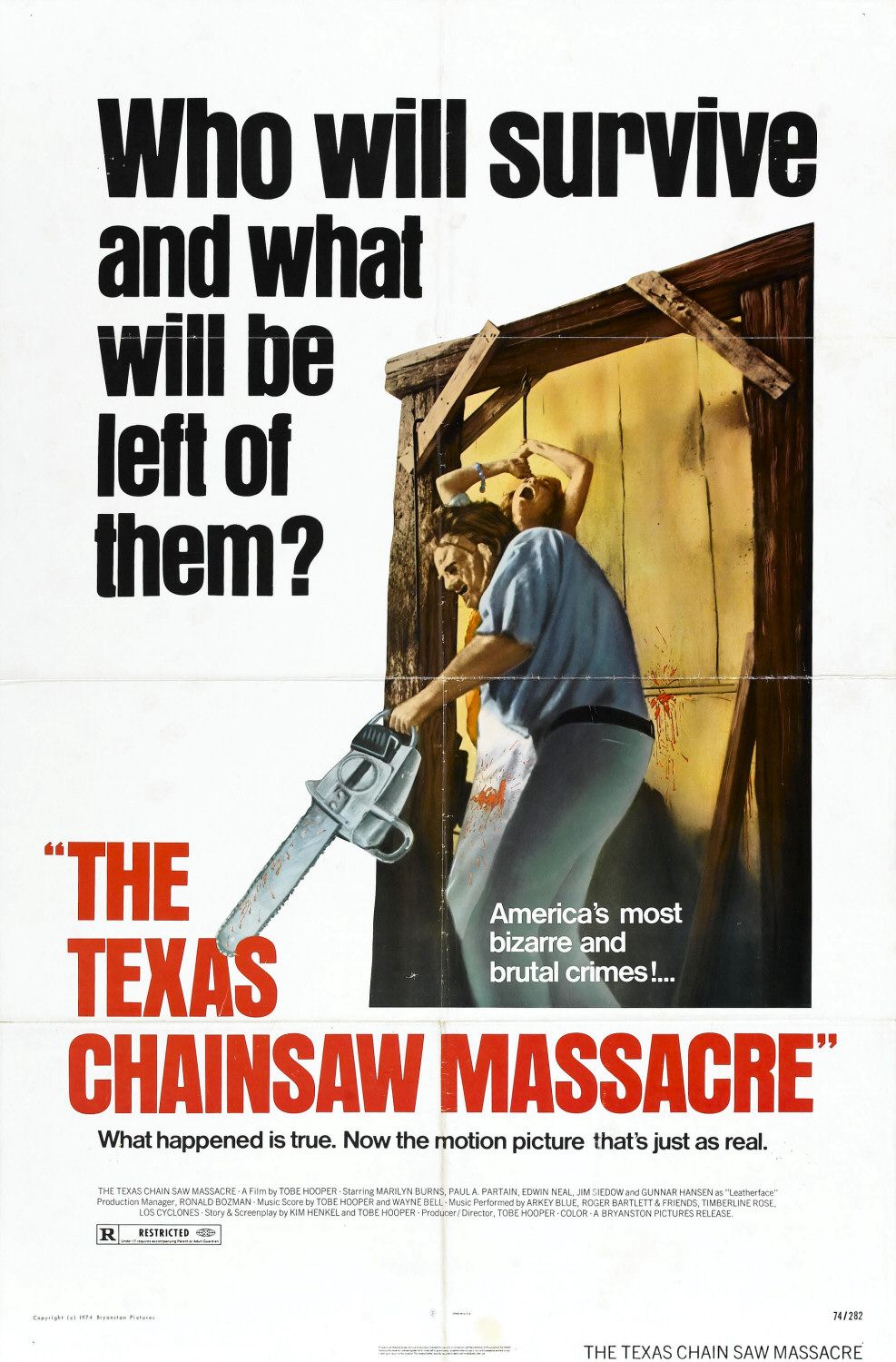
One-sheet poster for The Texas Chainsaw Massacre (1974)
At the time, did it feel like you might be working on something special?
We were idealistic film students and to us it seemed like Tobe and Kim Henkel weren’t prepared for each day’s shooting. Several hours were spent at the start of each day with them huddling, trying to figure out what to do for the day. The shoot was brutally hot and long days and nights. We knew we were capturing some amazingly horrifying images and scenes, but we probably didn’t have the post production experience to know how it might all fit together. I think the film really came alive in the year that Tobe and Larry Carroll spent editing it. When we saw the finished product we – like everyone else – were pretty amazed at the brutal horror and gritty reality of the story, all without showing too much gore.
You were an editor for a long time before becoming a director, what were your first editing jobs?
I had edited a lot of short films in film school, and when I first moved to Los Angeles – even in Austin we had a film production company where I edited shorts and commercials, public service announcements and stuff like that. When I first moved to Los Angeles, some of my friends who had preceded me here were working on a film called Roar, which was a film starring Tippi Hedren. I came onto that to be an assistant editor and quickly moved up to being the editor on the film.
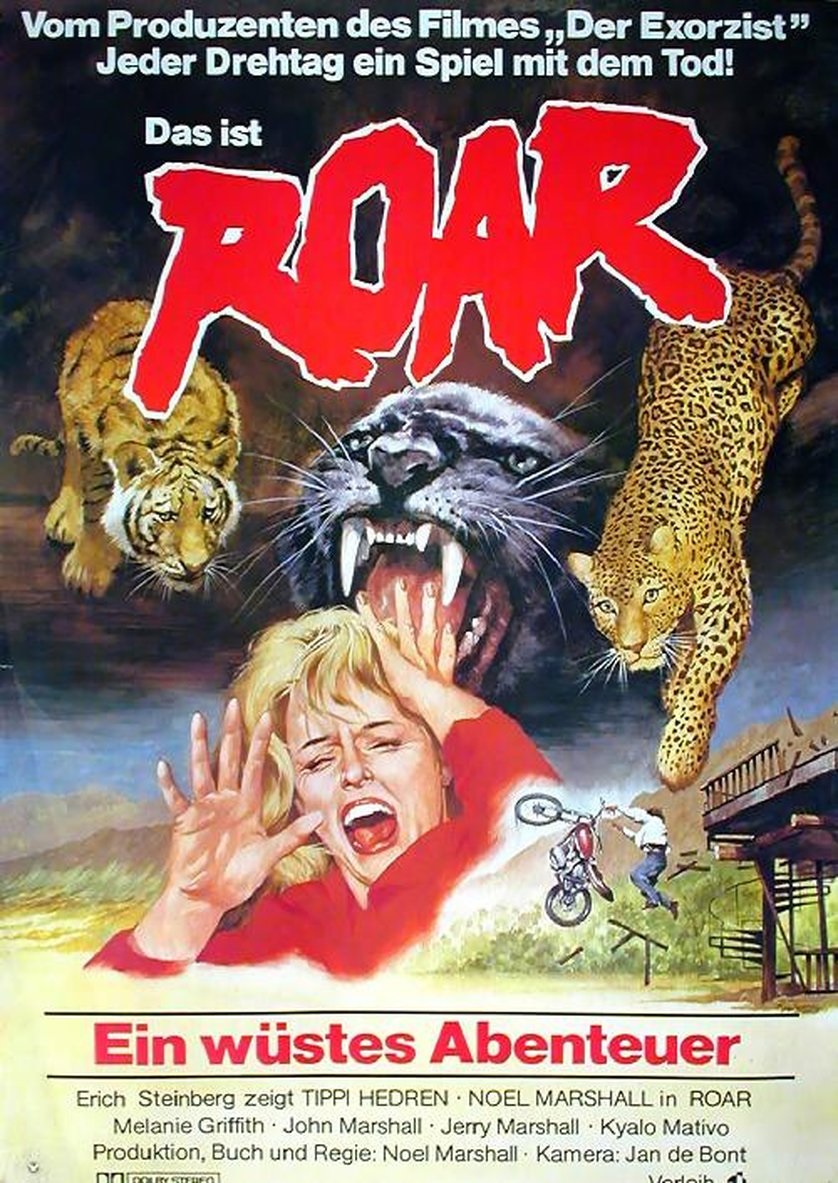
German one-sheet poster for Roar (1981)
“Roar” has become infamous for its lack of safety involving scenes with dangerous animals, were you aware of that at the time?
(Laughs) Oh yeah, we all knew it was completely insane. It was the kind of job that if you’d gotten out of prison, or had recently come to LA for a first time job, it was the kind of movie where they were hiring anybody because the turnover rate was so high. But I had a couple friends who were working on it already, and my job was just in the cutting room. So I had minimal interaction with animals. They asked me to come out to the set to record sound one time, and it became so crazy and dangerous that I kind of swore, “never again.”
Prior to that film’s release, you also edited “Tourist Trap,” which had the same production designer as “Texas Chainsaw” – Robert A. Burns. Did you know each other?
We were friends in Austin, even before Texas Chainsaw Massacre. He came out to LA in that same wave of Texans that I came out in. I think because Larry Carroll was the writer of Tourist Trap and had been the editor on Chainsaw Massacre, and now he was producing Tourist Trap so I’m sure he must have brought Burns in on it.
Was “Tourist Trap” the beginning of your association with Charles Band?
Yeah, that was the first film I did with him. I had known the director, David Schmoeller through, again, the Texas UT film school. We had been friends and I was director of photography on one of his shorts.
You edited a lot of Empire Pictures films in a short period of time – “The Dungeonmaster,” “Trancers” and “Ghoulies” were all released in late 1984, for example – was Charles Bands’ schedule hard to keep up with?
You know, compared to the way the film business works now, it was not so terrible. The shooting schedules were really tight, so it was tough on the production side, but in post, Charlie never really rushed things too much. Maybe later on, in the Full Moon days, things started getting more rushed. But in the beginning, he appreciated what the editing could contribute to those films and after cutting Tourist Trap, I kind of became his go-to fix-it editor.
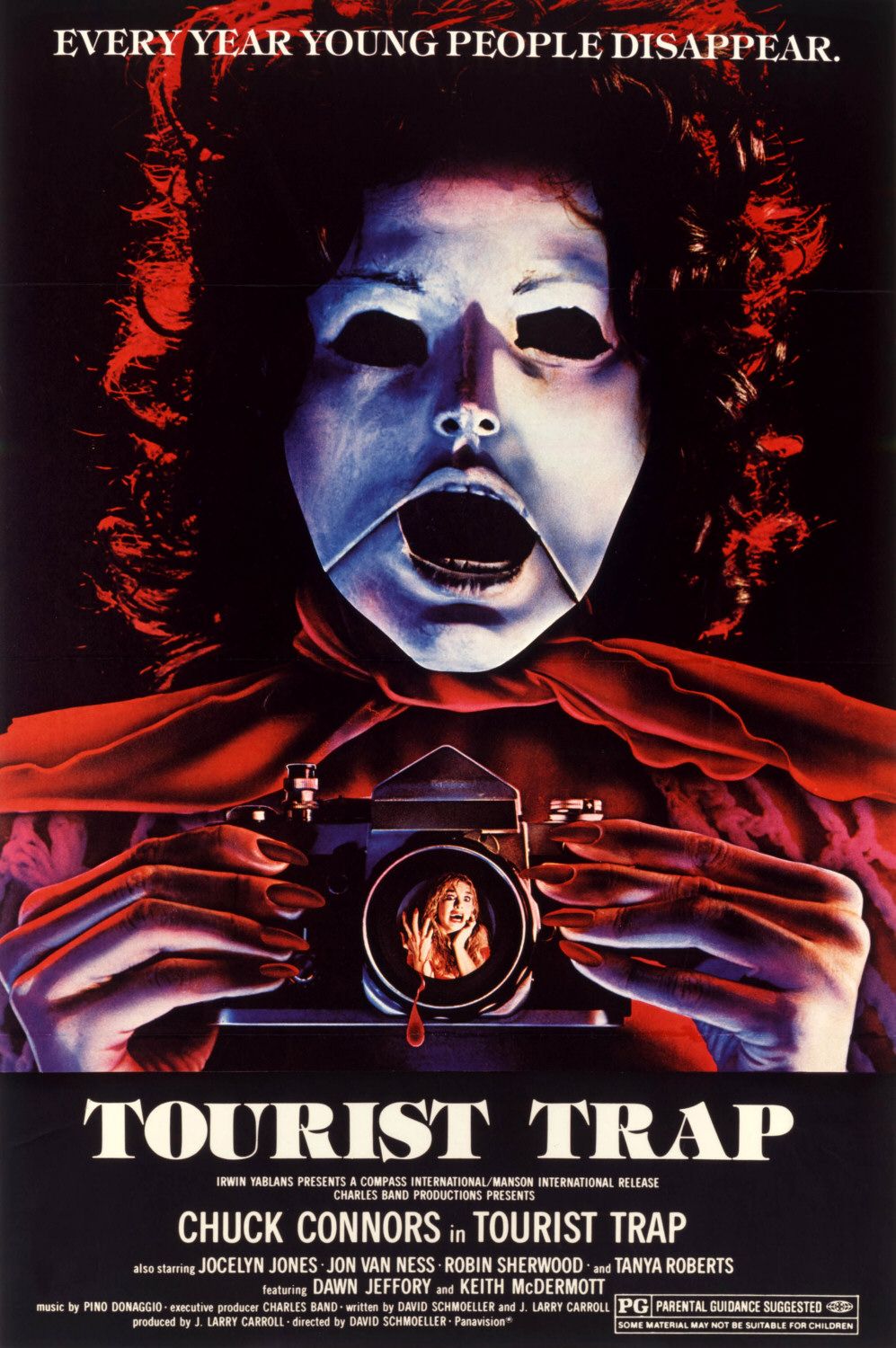
One-sheet poster for Tourist Trap (1979)
Were you also tasked with cutting the trailers for those films?
No, only the features. Charlie went to some outside trailer company.
Was there a lot of coverage on the films to work with?
On a Charlie Band production of those days, you basically got a master, and a medium shot, close-ups and not a lot of excess coverage. But you’d have two or three, maybe four takes to kind of sort between. And then it was a matter of – sometimes things would get forgotten or left out, so it was always kind of a matter of solving problems. Basically Charlie would leave me alone to put together a first cut, and then he would come in and give notes, and then I’d execute those notes to the best of what I thought would work.
So at Full Moon Entertainment, Charles Band couldn’t allow as much time for the creative process?
I think with Full Moon it became a much tighter organization all together. There was still – we never worked crazy 14 hour days or anything like that, so it was still a pretty livable kind of scheduling, but you definitely felt the tightening budgets.
Was “The Dungeonmaster” a difficult film to edit because of all the various directors and segments?
Yeah, basically when I started working on Dungeonmaster I started cutting the sequences that Charlie had shot, and then as each director’s material came in, it would have a totally different style and a totally different set of problems and challenges. Basically that film turned out to be short in its running time, and that’s how I ended up with an opportunity to direct a sequence.
Was your “Desert Pursuit” sequence the last segment to be filmed?
I believe it was, yeah.
You’ve been interviewed about your film “Terrorvision” for its Scream Factory Blu-Ray re-release, but one thing you hadn’t discussed was the ending – was it always your intention to have an unhappy ending, where Diane Franklin and Chad Allen don’t destroy the monster and it winds up eating everyone?
(Laughs) Yeah, that was always the original ending. To me it was like – I wanted it to be a film that’s like the nightmare of a 12 year old kid. Or something you’d turn on at midnight on the TV and go “What the fuck was that?” And when I contemplated the ending as I was writing it, it seemed like the monster was just too powerful to overcome, and so – you know, it might have been a mistake in terms of the popularity of the film, to have it be such a bleak ending. But that’s kind of what we went for. And to Charlie’s credit – Charlie’s not a guy who really gets comedy or anything, but they pretty much let me do what I wanted to do with that film.
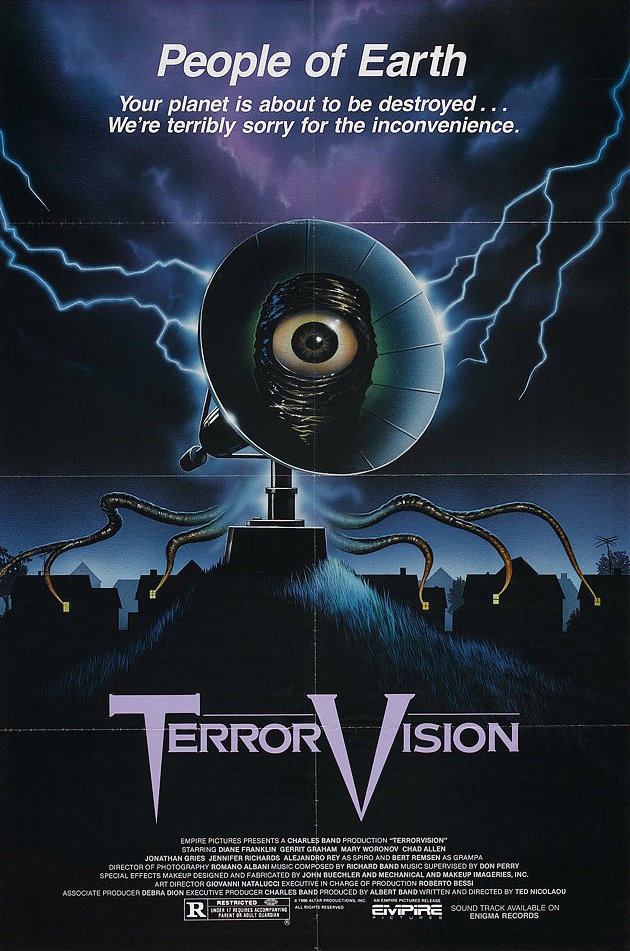
One-sheet poster for Terrorvision (1986)
The Sci-Fi Channel used to show a lot of Empire and Full Moon films; I think I experienced that late night “What the fuck” experience as a kid when I discovered “Terrorvision” while channel surfing.
(Laughs) For me it was two films, The 5,000 Fingers of Dr. T and Invaders From Mars, they had that effect on me when I was a kid.
We see clips from “Robot Monster” in “Terrorvision,” was that film also a childhood influence?
Robot Monster was a film I could see the humor in – in the funkiness of it all. But it didn’t have that expressionistic nightmarish quality that those other two had. It was that expressionism which I’d never encountered as a kid in movies before, and it was so evocative. I’d only seen it in Famous Monsters of Filmland magazine, in photos from Cabinet of Doctor Caligari. That was one of those films that I never got to see as a kid, I didn’t see it until film school. But the imagery of it was so potent.
One other question about that ending – when Chad Allen holds up his arms and is wearing leather armbands, are we meant to think for a moment that maybe the monster won’t eat him, because leather armbands also protected Jon Gries’ character, O.D.?
(Laughs) No, I didn’t think of that, actually. I did it that way just as if he’s, you know, protecting his face. That’s an interesting thought, though.
A couple years later you co-wrote one of Empire’s most memorably titled comedies, “Assault of the Killer Bimbos” – how did you become involved with that project?
In that period of time, Empire was sort of branching out – the system was that all the employees would just submit kooky titles, and then they’d choose a title and you’d get some kind of cash bonus if they chose your title. They were also trying – because of Charlie Band’s wife, Debbie Dion, who was kind of the co-executive producer on his films – she was trying to bring women directors into the mix. And so Anita Rosenberg came to the company and did a draft of that script, but they were not super happy with it. At that time I was sort of stuck in development hell there, chasing a project about survivalists. So they asked me to take a stab at rewriting that script.
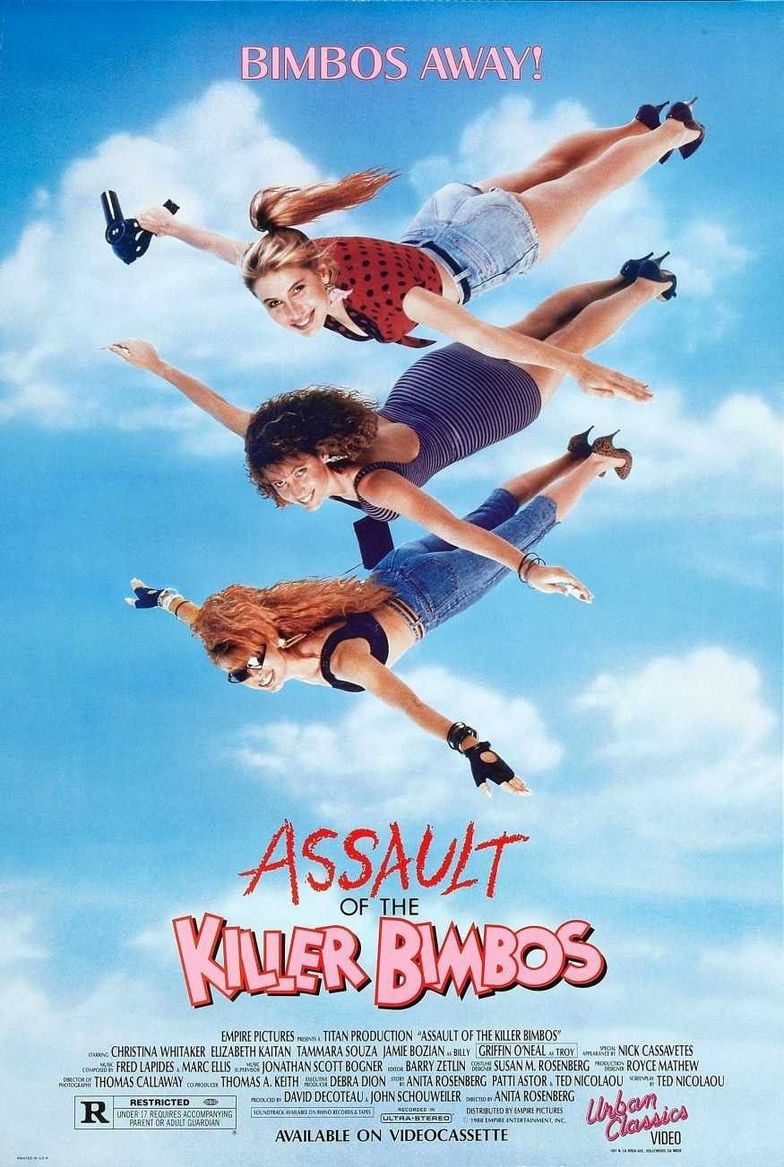
One-sheet poster for Assault of the Killer Bimbos (1988)
It was the first time I’d used a computer to type a script, I just kind of sat down and got stoned and did it for like two weeks straight. Anita and her partner Patti Astor added a little more action with the surfer guys. I didn’t really have any interaction with either one of them. Then they were still not completely happy with the dailies they were getting, and asked if I would step in and direct it, but I declined. It kind of seemed like the wrong thing to do to Anita at the time.
Your film “Subspecies” started a successful series for Full Moon, but unlike their other franchises such as “Puppet Master” or “Trancers” you wrote and directed all the film’s sequels yourself. How did you end up becoming the author of that entire series?
Well, Subspecies began with a screenplay by David Pabian, that Charlie wanted to do. This was around 1990, just after Ceaușescu fell in Bucharest. An expatriate Romanian producer came to Charlie and proposed that he could have all the costs in Romania covered by the Romanian government and Charlie could just pay for the post-production, and the above-the-line and the film stock. So, it was a great bargain for Charlie, and at that time I had just finished editing a few movies for him at the beginning of Full Moon; Meridian and something else. They asked Stuart Gordon if he wanted to go to Romania and he said no. I guess that was the hierarchy of directors; they’d go for Stuart Gordon and then me or David Schmoeller.
So, they asked me if I wanted to go to Romania and I was sort of up for an adventure. In June of that year I went over to Bucharest and the producer, Ion Ionescu who was an expatriate Romanian, had a villa on Lake Snagov which is kind of where all the former securitate officers used to live. And he introduced me to Vlad Paunescu who was the director of photography, and his girlfriend who later became his wife, Oana Tofan who became the costume designer. And Vlad did not speak any English at the time, but Oana spoke English and so she would translate between us. And I really liked them, and eventually they took me all over Bucharest, to restaurants and theaters, kind of introduced me to the artistic life of Bucharest. And I love them for that. They took me all over Romania to scout locations, too, and the locations we were able to access were spectacular, for the budget.
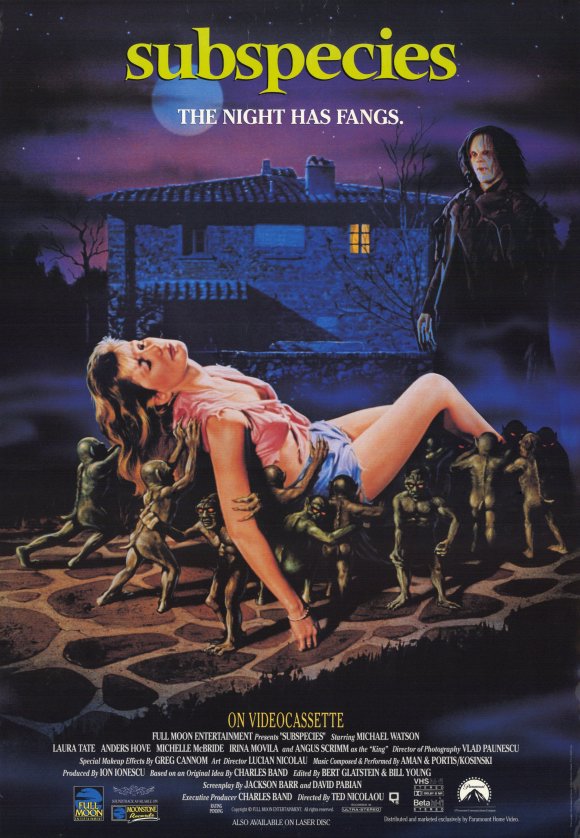
One-sheet poster for Subspecies (1991)
Basically, when I came back to the United States, I told Charlie “Yeah, I’ll go do it” so they sent me over around September of that year. And it was a freaking nightmare of a shoot. Really, really difficult shoot from day one. But my friendship with Vlad and Oana kind of pulled me through it, and also working with a couple of actors who were really great helped a lot. That’s how I first got involved with it; the script we had was pretty solid and we had a rewrite done by Jackson Barr, who was a friend of mine, and in the end I had to write a bunch of material when we were in production just to adapt it to the circumstances.
After the film was finished, for all it’s flaws Paramount really liked it. So they requested some sequels, and I think partially because Charlie trusted me a lot and because I had been his editor for so many years, I just kind of naturally fell into it, and I felt so – one you finish a film in a place like Romania, and the circumstances were so difficult, when you get home all you remember are the beautiful little moments within that horrible story. I got home and was like “Wow, that was really interesting, it changed me as a human being forever – I’ll do it again!” My relationship with Anders Hove, who played Radu, was important to me, and the protection of the overall story seemed important to me. So I just signed on to the sequels.
Vampire Journals was sort of the same thing. I guess I had staked out a vampire universe in Full Moon’s canon and Charlie asked if I wanted to do a vampire movie about some more elegant vampires, and it seemed interesting to me. Plus, I loved working in Romania by that time and would go do anything there.
How’s your Romanian these days?
About as basic as it ever was. I can speak a words and get along, just a tiny, tiny bit.
Your friend Jackson Barr also wrote your film “Bad Channels” after “Subspecies,” how did you get attached to that?
(Laughs) I avoided Bad Channels for years. Charlie kept saying, “You wanna do Bad Channels? You wanna do this movie about a monster in a radio station?” And I was like, “No! Fuck no! I just did Terrorvision, about a monster in a TV, and it almost ruined my career!” But at a certain point, I was just like – “Okay, I could do some little fake music videos in the middle of it, that sounds a little more interesting.” And then somehow, you resist and resist but you’re in development hell for so long you eventually kind of come around and go “Okay, I just want to work.”
He was really that stuck on the idea of an alien in a radio station?
Yeah! I mean, he had a poster that he really liked, and that was Charlie. He knew what he could sell, and that’s the movie he tried to make – what he knew he had sold, or pre-sold.
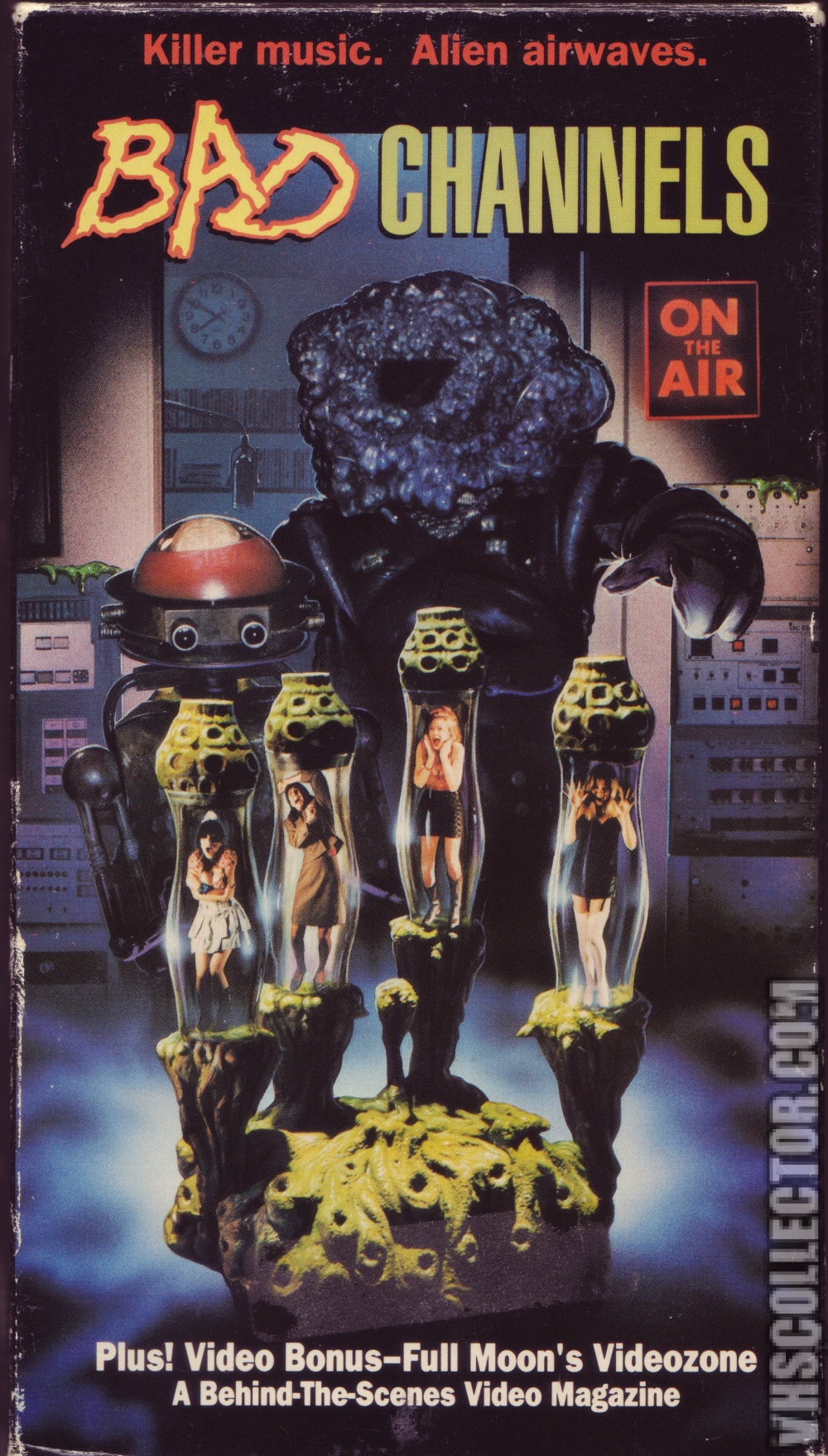
Video box cover for Bad Channels (1992)
How did you go about choosing the artists for the soundtrack?
We had a guy named Pat Siciliano who was kind of scouting bands for us, then they would send me to see them in their rehearsal spaces. I think I scouted a couple more than what we eventually chose, but I liked the guys that he found for us, and they seemed bright and funny enough for the movie, so we went with them.
The “Manic Depresso” sequence in the hospital with Sykotik Sinfoney is a real standout.
Yeah, those guys were amazingly visual. And their song was good, too.
Was Martha Quinn sought out by Full Moon for her role, or did she audition?
Full Moon sought her out. She was coming off of MTV fame and for Charlie that made her a name, a draw.
Did you shoot the crossover/sequel teaser with Tim Thomerson as Dollman after the end credits?
I did, we went out to the desert one day and shot that.
Do you feel the Marvel Cinematic Universe owes a debt to Full Moon, for innovating the post-credits teaser?
Probably not. Knowing Charlie, it’s probably the other way around.
Eventually you did direct a Full Moon franchise crossover movie, “Puppet Master vs. Demonic Toys” for the Sci-Fi Channel in 2004.
(Laughs) That was kind of a big mistake, I think, in a lot of ways. Charlie had promised a film to Sci-Fi Channel and frittered away the money or something, and kind of pissed off Sci-Fi Channel. But they still were owed a Puppet Master film, so this guy Jeff Franklin somehow ended up with the rights to produce the film for Sci-Fi Channel. And he was looking for a director and asked Charlie for a recommendation. Charlie recommended me. And the phone call came at a time when I had not gotten to direct a film in quite a long time, and was hungry to do one, so I said yes. Knowing full well that I hate fucking Puppet Master. I like working with people, not with puppets, you know?
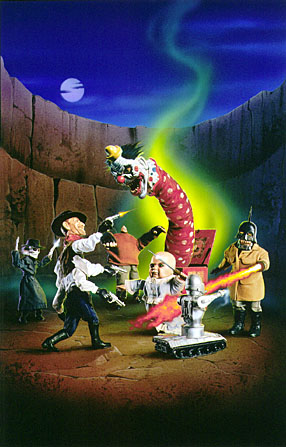
Early promotional art for Puppet Master vs. Demonic Toys
So I took the film, went over to Bulgaria – I do like working in foreign countries, so Bulgaria was a place I had not gotten to work in before. But when I got there – I hated the director of photography, the producer was drunk on his ass most of the time, the money for the locations and for building sets was way more limited than it should have been. And when Jeff Farley brought the puppets over, they really were a disappointment. Starting from that – oh, and then Jeff Franklin cast Corey Feldman, which was a humongous mistake. That film was kind of bitten from the beginning, unfortunately, and I tried to make something – basically the script that had been written by Courtney Joyner had some novelty in it and had the whole Christmas theme, and I took it and rewrote it to make it a little funnier, but I think “funny” is not exactly what Puppet Master fans want or expect. And the look of the film – you know, Charlie, for whatever kind of cheapness he might have, always appreciates a good cinematographer, somebody who can bring atmosphere to even a low budget film. And David Worth, the film’s D.P. was not an atmospheric cinematographer. So we butted heads a lot on the lighting and the look of the film. So all of those things – it didn’t have the kind of brooding quality that Puppet Master fans kind of want, it didn’t have great puppet action, it didn’t have a great lead because Corey Feldman is such a complicated actor – it was a mistake, that film.
You also directed children’s films for Band’s “Moonbeam Entertainment” label throughout the 90s, starting with “Remote.” Was that a nice change of pace from the horror genre?
Yeah, basically there came a point where Charlie and Debbie had a baby, and Debbie started wanting to do fantasy films for children, their first one was Prehysteria! I really enjoyed doing those movies, there’s a certain pleasure that comes from doing horror films and the atmosphere you can create, and the mayhem – all of that’s really interesting from a technical standpoint, but doing a kid’s movie makes you feel lighter in your soul, and feel like you’re telling a story that’s got some kind of moral value to somebody who will absorb it, you know? And to me, working with kids was a real challenge – there’s pleasures to it and a lot of anxiety related to it as well. But Remote in particular had a really good cast of kids, and the director of photography Adolfo Bartoli was a real asset to the film. We determined we were going to make it look as commercial and beautiful as we could. And all of the remote controlled toys were another challenge, but it was really fun doing that film.
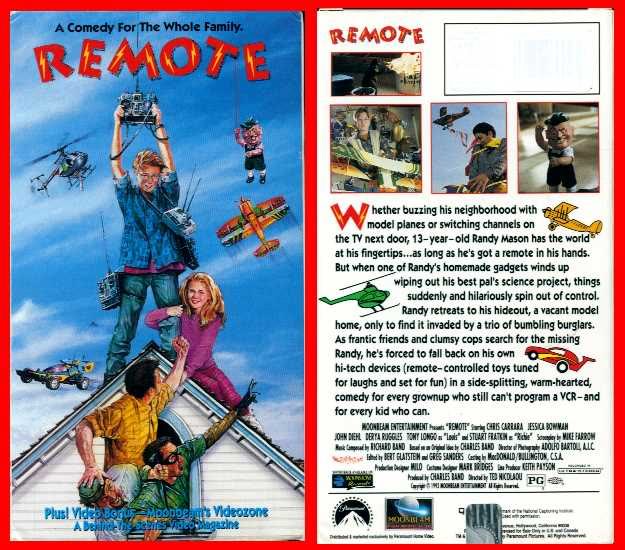
Video box front and back cover for Remote (1993)
Did being a father yourself help you in working with child actors?
For sure. I mean, every kid’s different, you just have to kind of find a way to work with them or manipulate them or whatever it requires to get what you want for each shot. Being a father teaches you patience above everything else, so that really helped.
After “Remote” you made several children’s fantasy movies for Moonbeam Films, starting with “Dragonworld” – are fairy tale stories a genre you’re particularly interested in?
I do like the deep roots that fairy tales have in our psyche, and I sort of see myself in storytelling terms as a fantasy storyteller, whether it’s horror films or children’s films. When they asked me to do Dragonworld, the story was a little bit much too Mighty Joe Young, and should’ve been a little bit better than it was. But I sort of took that script and rewrote it as best I could, given the time. Because really, at Full Moon there wasn’t endless development time or rounds of notes or anything. You sort of did a draft, they gave you a few notes, you did one more draft and you were in pre-production. But what was spectacular about Dragonworld was, suddenly with Moonbeam Films I think Charlie had more money in the budgets and you could feel that, especially at the beginning.
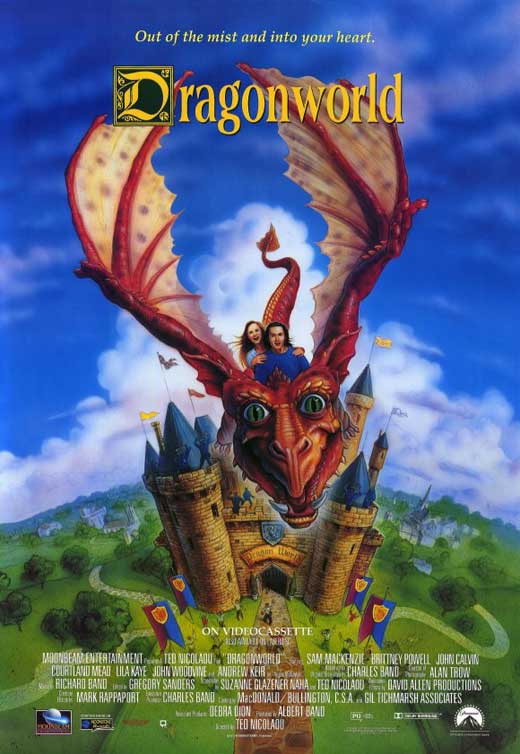
One-sheet poster for Dragonworld (1994)
Charlie sort of had a way when he had to deal with the studio, the first couple of films he’d try to make in the right way and then as each film was successful, he’d kind of start copping a little more money for other projects, and a little less money went into each of the films and so the quality suffered eventually. But with Dragonworld, the vision to build a big puppet dragon head was a big one for Charlie and it cost a whole lot more money than he thought it was going to. The second great thing about it was the decision to shoot it in England. So, I got to go to England and explore castles all over the country to find locations, and also cast some phenomenal actors. Andrew Keir was an incredible man to work with. Basically for me that film was the most heartfelt and deepest emotional film of any of the films I got to do for the Moonbeam label.
In 2000 you made one of the earliest “found footage” horror films after the success of “The Blair Witch Project” – “The St. Francisville Experiment.” How did that come about?
That was a film that Charlie had sold to Peter Locke of Kushner-Locke, a company that did some financing for his movies. He sold the concept to them and then in typical fashion, kind of didn’t really plot it out very well, or plan how it was going to be shot. So like the day before they were supposed to shoot it, he asked me if I’d go down and oversee it. And I had not heard anything about it until the day he asked me to go down there. So I went to Louisiana, met with the cast who’d already assembled down there, met with the executive from Kushner-Locke who was stuck there with nothing really rigged in the house the film takes place in. So we kind of took the day that we had and figured out how we could effectively get some of the gags to work and somehow make the film itself work.
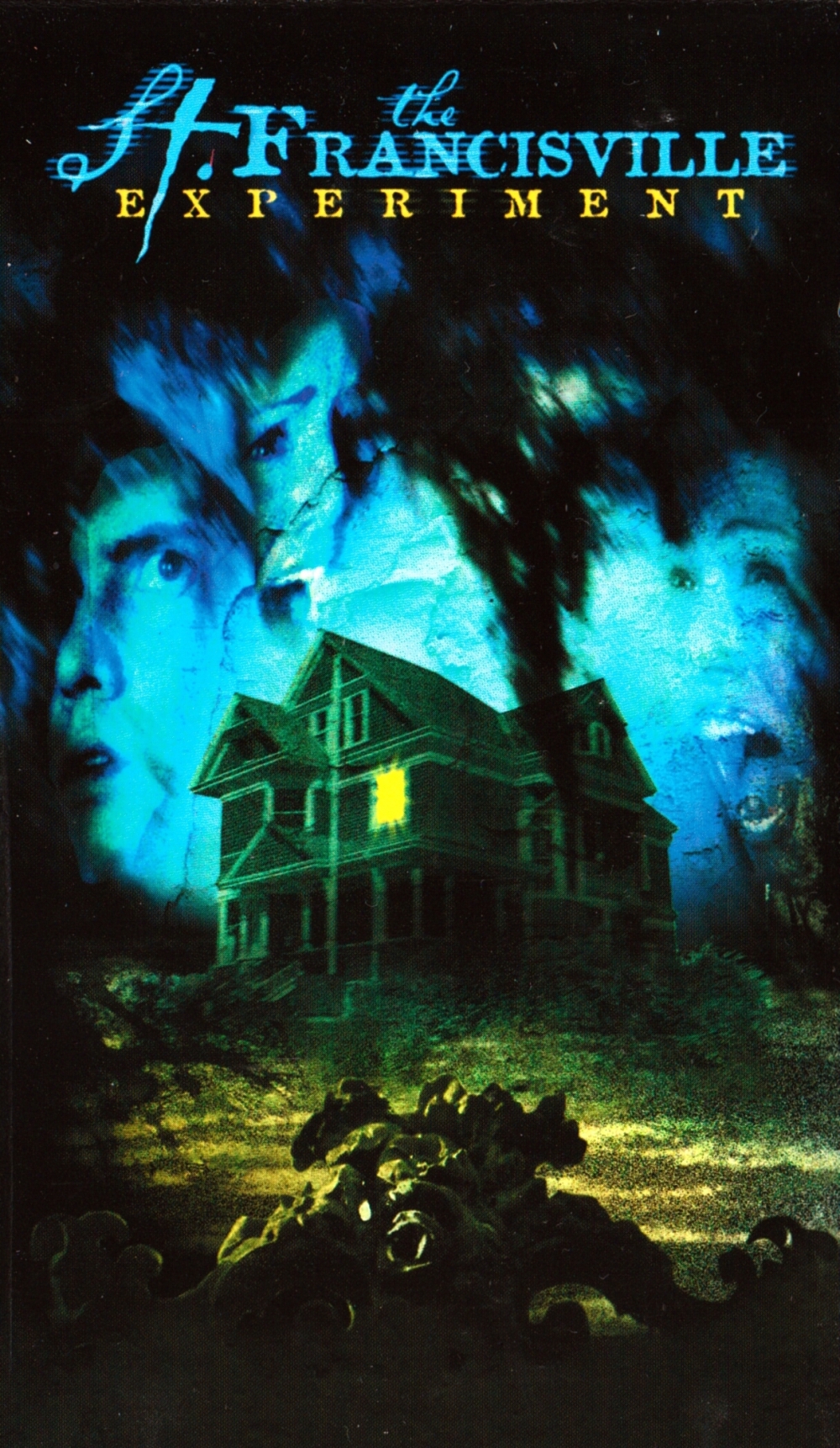
One-sheet poster for The St. Francisville Experiment (2000)
We shot that night, and probably the only gag that occurred at that point was the chair flying across the attic. And then we came back to Los Angeles and started editing, and edited and edited as well as we could, then test screened it with some audiences and went back and shot some more sequences, came back and edited again, then shot more sequences on a sound stage in LA – until the film eventually at least had the shape of a story. The historical truth behind the story is actually horrifying, and lends itself to being believable.
Had you seen “The Blair Witch Project” prior to making the film?
Yeah I had, and it had some very convincing performances but the shakey-cam kind of style seemed a little over the top to me.
Is there anything you’ve got coming up that you’d like to mention?
I have a great supernatural shocker of a movie that I’d like to shoot in Texas, that I’d like to raise the money for. But that’s a slow-going process these days. If anyone has the money, they can call me direct. (Laughs)
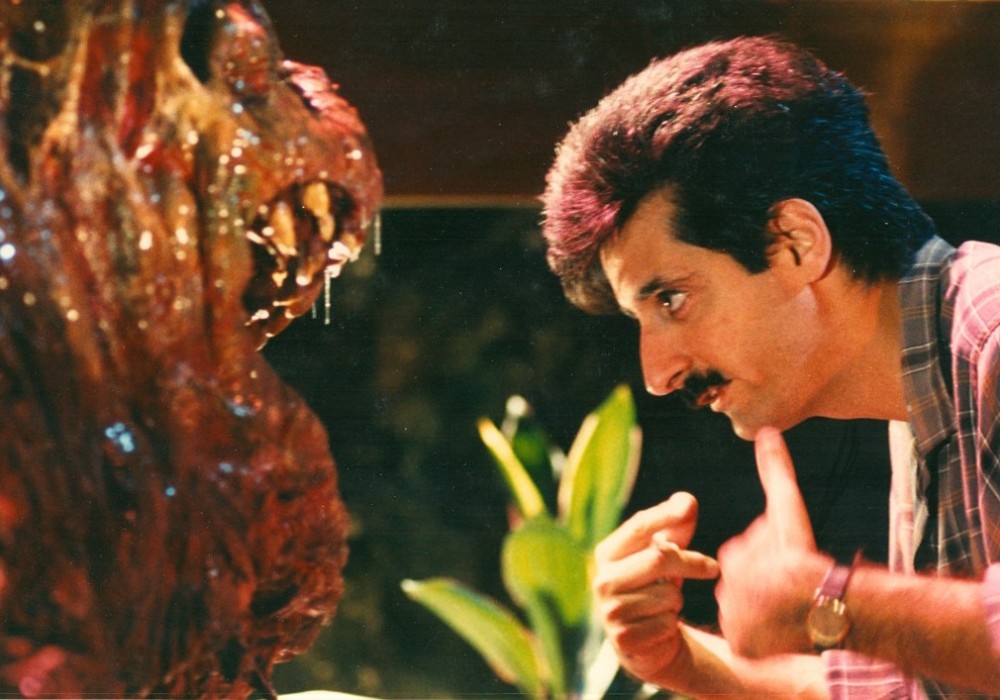
4 comments